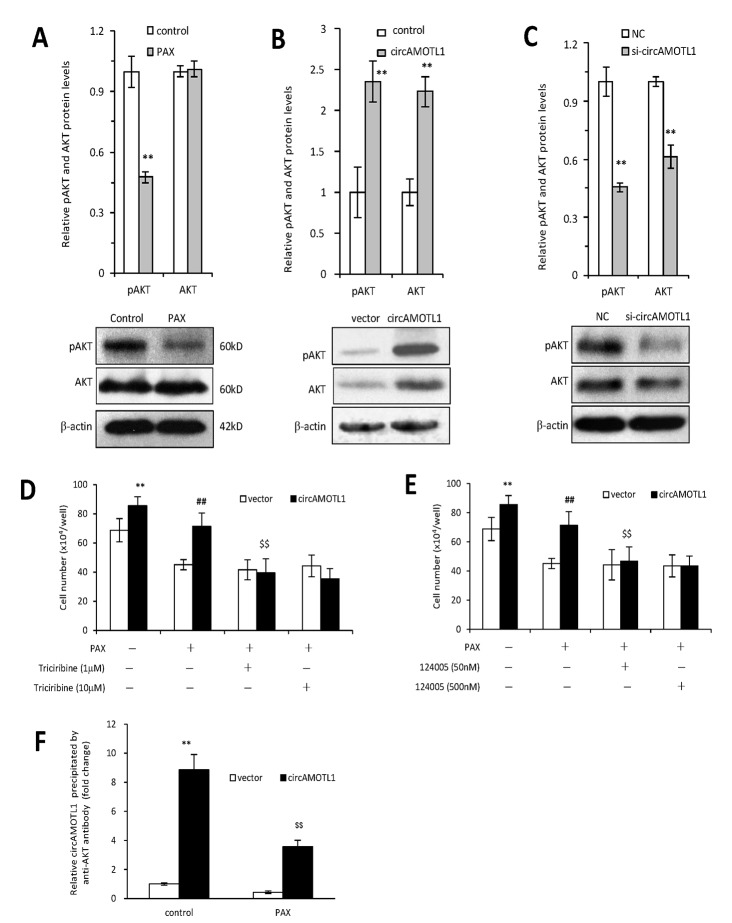Figure 5.
Role of AKT in circAMOTL1 mediated drug resistance. (A) Upper, the protein expression of AKT and phosphorylated AKT were detected in PAX treated MDA-MB-231 cells and quantified. Lower, typical Western blots are shown. (B) Upper, the protein expression of AKT and phosphorylated AKT were detected in vector control and circAMOTL1 transfected cells. Lower, typical Western blots are shown. (C) Upper, the protein expression of AKT and phosphorylated AKT were detected in negative control and circAMOTL1 siRNA transfected cells. Lower, typical Western blots are shown. (D) AKT inhibitor Triciribine was used at the concentrations of 1 and 10 μM to block the effect of AKT pathway, and cell viability was measured. n=8. **p<0.01 compared to untreated vector control. ##p<0.01 compared to PAX-treated vector control. $$p<0.01 compared to untreated circAMOTL1 overexpression group. (E) AKT inhibitor, 124005, was used at the concentrations of 50 and 500 nM to block the effect of AKT pathway, and cell viability was measured. n=8. **p<0.01 compared to untreated vector control. ##p<0.01 compared to PAX-treated vector control. $$p<0.01 compared to untreated circAMOTL1 overexpression group. (F) The circAMOTL1 expression after immunoprecipitation with phosphorylated AKT antibody (Ser473) in PAX treated MDA-MB-231 cells. n=4 **p<0.01 compared to untreated vector control. $$p<0.01 compared to untreated circAMOTL1 overexpression group.

